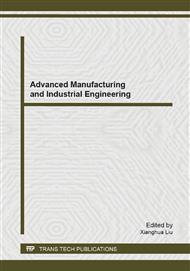p.811
p.815
p.821
p.826
p.833
p.841
p.845
p.849
p.853
Construction and Verification of Analytical Model for Eddy Current Testing Based on Multi-Layered Conductive Structures
Abstract:
Based on the Maxwell equations in time-harmonic conditions, analytical model for cylindrical coil above multi-layered conductive structures of infinite large is built, the general solution for integral expression of coil’s impedance is derived. As the complex computation and inconvenient adjustment for calculating precision of integral form, the truncated region eigenfunction expansion is adopted to derive the series expansion expression of coil’s impedance. Calculating precision is ensured by selecting the truncating radius and the number of summation terms properly. Use Mathematica and CIVA separately compute the impedance variation of coil above the single conductive layer of different thickness. The results are highly identical and verify the validity of series expansion expression. The expression can provide help for optimizing the parameters of eddy current sensor.
Info:
Periodical:
Pages:
833-840
Citation:
Online since:
August 2014
Authors:
Price:
Сopyright:
© 2014 Trans Tech Publications Ltd. All Rights Reserved
Share:
Citation:


